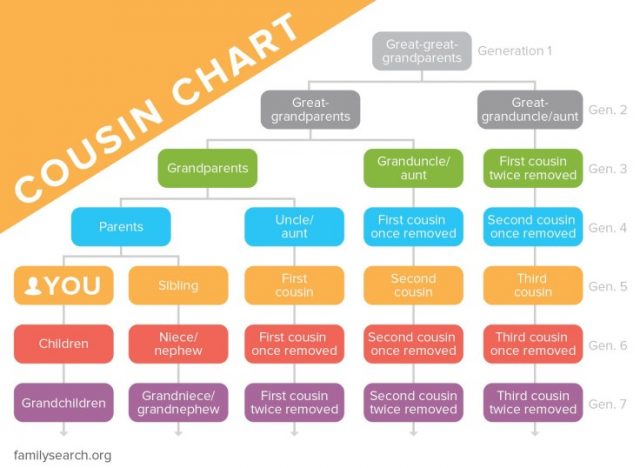
So what exactly is a second cousin? And what does it mean to be a “first cousin once removed”?
Cousin Chart—Family Relationships Explained
The cousin chart above shows a visual representation of the following:
Cousins are people who share a common ancestor that is at least 2 generations away, such as a grandparent or great-grandparent. You and your siblings are not cousins because your parents are only 1 generation away from you.
The number associated with your cousin has to do with how many generations away your common ancestor is. For example:
- First cousins share a grandparent (2 generations)
- Second cousins share a great-grandparent (3 generations)
- Third cousins share a great-great-grandparent (4 generations)
- Fourth cousins share a 3rd-great grandparent (5 generations)
To be “once removed” from a cousin means you are separated by one generation. The number before “removed” will always represent the number of generations you are separated (“removed”) from the cousin.
If you look at the cousin chart above, you’ll see that each row is color-coded by generation. You, your siblings, and your first, second, and third cousins are all of the same generation. The boxes labeled “cousin once removed” are either from one generation above or below you. You are “once removed” if you are separated by 1 generation and “twice removed” if you are separated by 2 generations, and so on.
Therefore, your parent’s first, second, and third cousins are also your first, second, and third cousins—but once removed.
To learn more about relationships and to see a Cousin Calculator Chart, see the article. “Cousin Chart—Family Relationships Explained.”
The post What is a Second Cousin and a Cousin Once Removed? first appeared on LDS365: Resources from the Church & Latter-day Saints worldwide.Continue reading at the original source →



